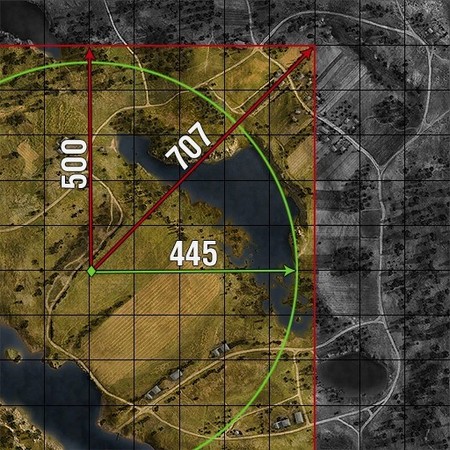In Development: Spotting Range Changes [UPDATED]

Tank Commanders,
The current spotting range system will soon undergo some changes in Update 9.12. Read on to learn about what the changes will entail and how it will affect your battles in World of Tanks.
Overview of the Current Spotting Range System
Currently, the spotting system in World of Tanks has two components: spotting range and vehicle draw distance.
Draw distance is the area inside which you can see vehicles (allied or spotted enemy vehicles). Previously, this area was represented by a square 1000 m on side. Maximum draw distance was 707 m diagonally and 500 m on the straight.
Spotting range is a circle inside which your vehicle can spot enemy vehicles. The spotting range depends on the characteristics of с vehicle, but it cannot exceed 445 m. Equipment, additional consumables, and crew members' skills can improve the spotting range. However, in such case, "additional" meters increase the quality of spotting and facilitate spotting of hidden vehicles within the view range, but the spotting range still cannot exceed 445 meters.
Therefore, in Update 9.10, the circle of radius 445 m is inside the draw square 1000 m on side:

- Green circle: view range
- Red square: draw distance.
As you can see on the image, the square is somewhat irrational, because the diagonal spotting range exceeds the spotting range on the straight by 207 m. Usage of the draw square was stipulated by specific features of the game engine. In version 10.0, the spotting system of World of Tanks will be changed.
Changes within the New Spotting Range System
In version 9.12, the draw square will be replaced by a circle of radius 564 m. This change will provide for a proportional distribution of spottinging along the whole circle and eliminate the irregularity of the previous solution.
It should be noted that compared to the draw square, the view range on the straight increased by about 13% (64 m), and the general spotting range remained almost the same.



